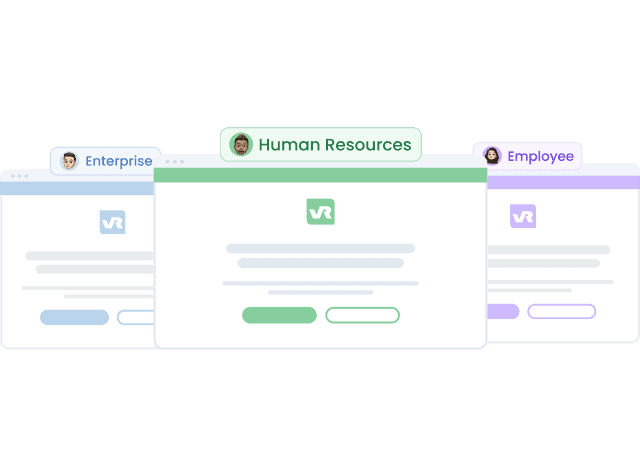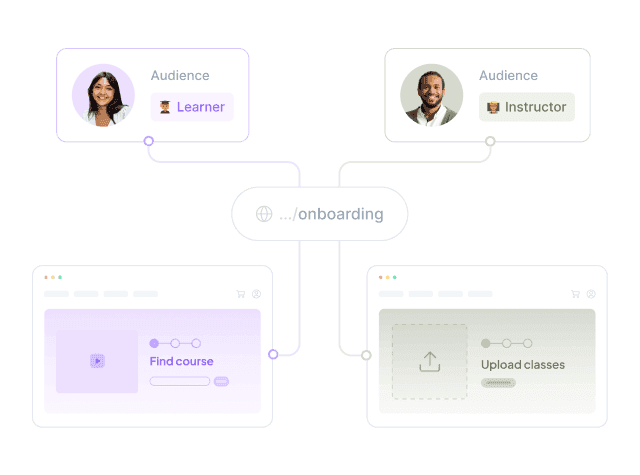Companies with small traffic usually grow significantly when they attract more users to their websites. But if you have hundreds or even millions of sessions on your site every month, you might have noticed that the numbers don't add up at a certain point: an uplift in traffic won't necessarily increase conversions proportionally.
That means it's time to work your way up to a more conversion-optimized site.
But while many companies have that in mind and are obsessed with CRO (Conversion Rate Optimization), have you ever actually done the math on how your conversions translate into actual growth?
Ask 10 marketers about their growth projections, and probably 8 of them will tell you they don't have them — or that they have, but they're outdated.
Sometimes, we don't have the time to translate our thoughts into numbers. That’s why after creating our own financial model, we decided to create a conversion growth model template for you. Keep reading to find out how it works, and download your copy.
Read our article with SaaS personalization ideas to discover how to increase conversions by 20% on average.

What is a conversion growth model?
First things first, let’s define what a growth model is. There are many definitions on the internet, but to put it briefly, a growth model is a spreadsheet or visual representation of all the leverages, loops, growth channels, and funnel stages businesses need to scale and each one’s output over time. It usually includes metrics such as these ones:
- Conversion rate
- Monthly active users (MAU)
- Return over investments (ROI)
- Lifetime value (LTV)
- Cost per acquisition
- Monthly recurring revenue (MRR)
- Revenue
A conversion growth model, on the other hand, is a mathematical model in which conversions are the main metric and key drive for increasing the customer base.
Its main purpose is to quantify how much the uplift in conversions impacts business expansion over time versus, for example, how much marketing investments impact it.
Why do you need a conversion growth model?
A conversion growth model challenges common assumptions about what drives business growth. We often assume that significant investment in marketing is necessary to boost results. However, improving the website's conversion rate can lead to substantially greater growth than anticipated.
Let's take the example of a SaaS company with 10,000 monthly organic visits and investing $25,000 per month in marketing campaigns, with an average conversion rate of 3%. This is a simple 5-year projection:
In this case, if we double the marketing investments to $50,000, the customer base increases by ~60%.
But if we increase the conversion rates by a 10% compound rate over time, the customer base almost triples in 5 years.
The numbers speak for themselves. A conversion growth model helps you realize that sometimes, small changes in conversion rates can drive significant growth, often more effectively than large-scale marketing campaigns.
How to build a conversion growth model
To build a conversion growth model, it's essential to have structured data on your key metrics. Start by considering your main business objectives. This will help you define which metrics to track. Next, create hypotheses about how these metrics will evolve over time.
Check out the metrics we selected as inputs to create the assumptions for our model.
Website signup and lead metrics:
- Organic sign-up conversion rate
- Paid sign-up conversion rate
- Target sign-up conversion rate
- Sign-up conversion improvement rate
- Sign-up to free plan conversion rate
- Free to paid plan conversion rate
- Organic lead conversion rate
- Paid lead conversion rate
- Target lead conversion rate
- Lead conversion improvement rate
Traffic metrics:
- Number of organic visits
- Organic visits monthly growth rate
- Campaign monthly investment
- Average cost per click
Product metrics:
- Sign-up to lead conversion rate
- Average time to convert from free to paid plan
Sales metrics:
- Sales Commission
- Current number of free trials
- Current number of opportunities
- Current number of deals
- Current number of customers
- Lead to opportunity conversion rate
- Average time to convert from opportunity to deal
- Opportunity to deal conversion rate
- Average time to convert from deal to customer
- Deal to close conversion rate
Other metrics:
- Average contract value (ACV)
- Fixed sales and marketing costs
- And these are some of the output metrics of the growth model:
- Average sign-up conversion rate
- Average lead conversion rate
- Number of customers
- Annual recurring revenue (ARR)
- Marketing spend
- Cost of acquired customer (CAC)
- Lifetime value (LTV)
- LTV/CAC ratio
Having a data-driven approach will not only help your team remain on the same page and work towards the same goals but also make your success quantifiable and capable of future replication.
You should base your model not only on assumptions but also on research. Creating an outstanding sales forecast can be a great way to avoid unanticipated cash flow problems with production, staff, and financing needs. It brings several long-term benefits:
- Resource allocation
- Cost control
- Risk management
- Competitive analysis
Free SaaS conversion growth model template
We get it. Creating a conversion growth model from scratch can be daunting, especially because growth professionals often wear many hats while crafting and implementing new strategies. It’s like inventing the wheel again and again every week.
But it has to be done at some point — especially when claiming budget for hiring new people and other resources to put all new ideas into practice.
That’s why we decided to share our conversion growth model templates with you for free.
These templates include end-to-end funnel metrics, are specifically designed for SaaS companies, and come in three versions:
-
SaaS conversion growth model for businesses that rely on both product-led and sales motions, with sign-ups and demo requests as the main conversion rates.
-
Product-led SaaS conversion growth model for product-led businesses with sign-up as the main conversion rate.
-
Sales-led SaaS conversion growth model for sales-led businesses with demo requests as the main conversion rate.
If your business is not SaaS, but you still want to know what to expect from putting your efforts into optimizing conversion rates, don’t worry — we’ve got you. Check out our lead generation-focused template or even the one we did for e-commerce.
Don’t hesitate to download and create your copy, share it with your friends, and use it as and when you wish.
How to use the conversion growth model template
To effectively use the conversion growth model template, it's important to recognize that while the template offers a clear idea of what to expect from your marketing strategy changes, it won't achieve results on its own. To get the most out of this tool, you should track your metrics weekly or every two weeks. This regular monitoring will show you how closely your actual outcomes match the predictions, allowing you to adjust the model as needed.
If you can forecast your success accurately, you can replicate your results and achieve exponential growth. If you can't, the template helps you identify bottlenecks and refine your strategies accordingly. By consistently evaluating and tweaking your approach based on the model's insights, you can enhance your marketing efforts and drive sustainable growth.
Read our personalization guide and learn everything you should know about website personalization and how to get the best results.

That’s a wrap
While many marketers think increasing marketing spend is the only answer to achieving success, the numbers often show a different reality. Sometimes, we can achieve outstanding results without the budget we think we need.
We hope this template will help you find out how increasing conversions can make you look like you have a 300 people team, even if you have just a team of 3 🪄
If conversions are not your focus right now, and this growth model doesn’t suit your needs, there are other growth model examples available here. Depending on your specific goals and circumstances, a different one might be a better fit.
If, on the other hand, you are already obsessed with conversions, but your company is facing a plateau in results, personalization might be the answer to changing this game. While many companies see uplifts of 8% in conversion rates on average when performing AB tests, personalization can increase this metric by 20% to 30%. So if you want to have more than marginal impacts, we are here to help. Try our platform today and start revolutionizing your website experience.